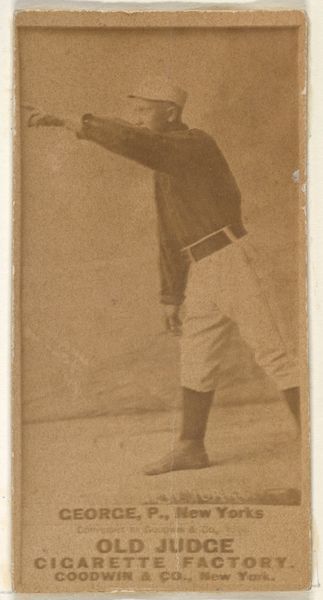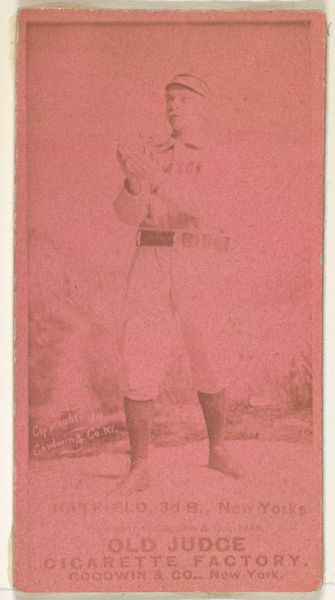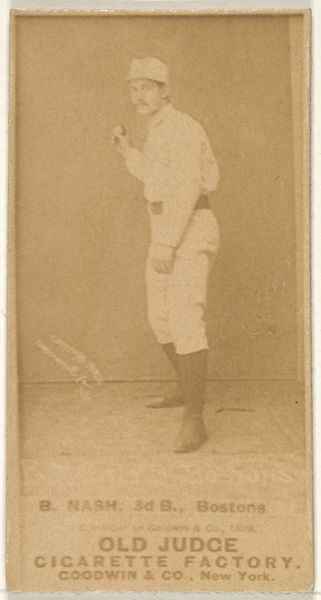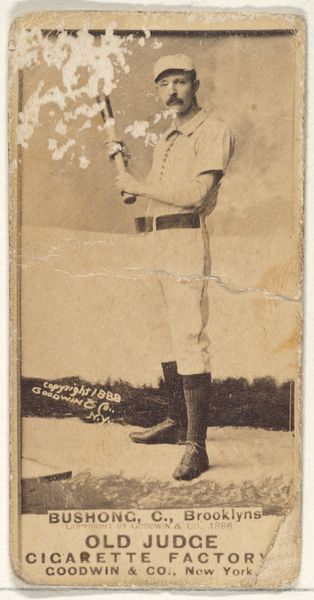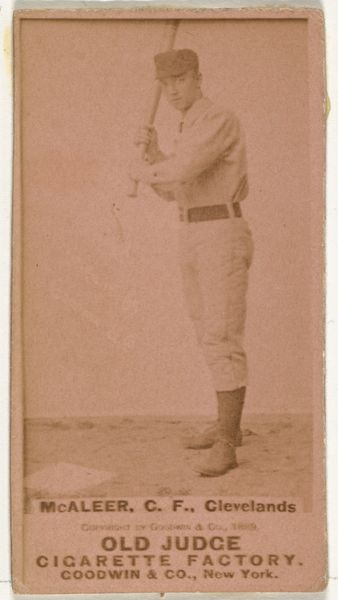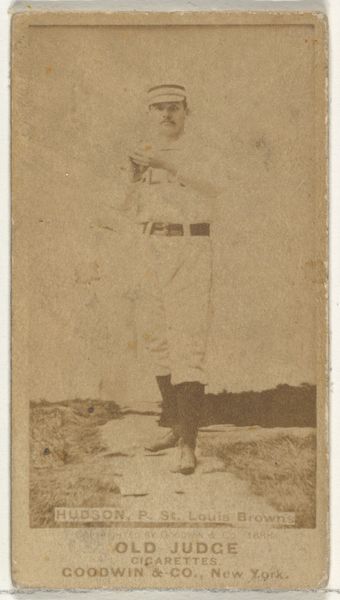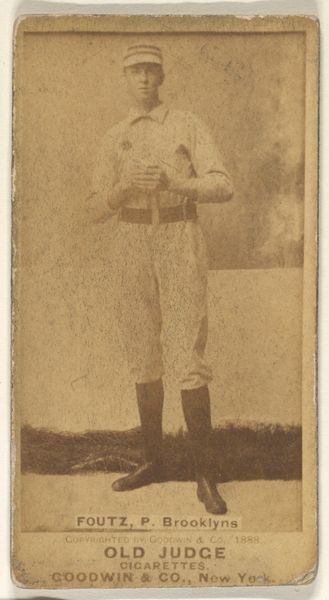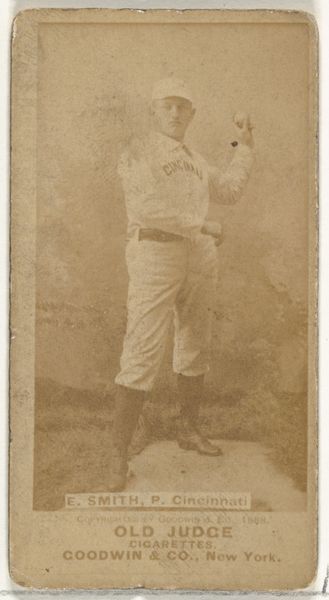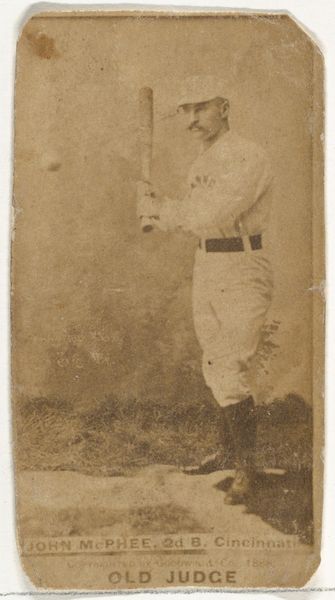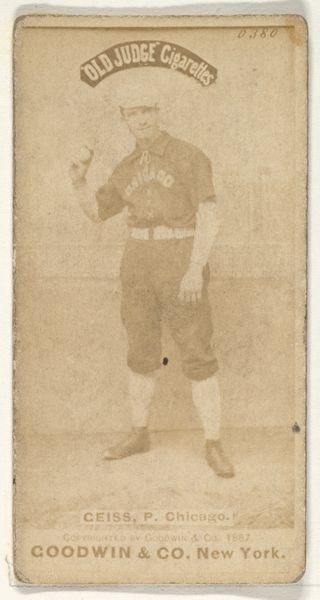
James M. "Jim" Burns, Center Field, Kansas City Cowboys, from the Old Judge series (N172) for Old Judge Cigarettes 1887 - 1890
0:00
0:00
print, photography
#
portrait
# print
#
impressionism
#
baseball
#
figuration
#
photography
#
men
Dimensions: sheet: 2 11/16 x 1 3/8 in. (6.9 x 3.5 cm)
Copyright: Public Domain
Curator: We’re looking at a baseball card, “James M. 'Jim' Burns, Center Field, Kansas City Cowboys,” part of the Old Judge series produced between 1887 and 1890 by Goodwin & Company. It's a photographic print. Editor: My initial thought is how sepia-toned and soft the image is. There is a palpable nostalgic quality here. I’m struck by its small scale—presumably designed to fit within a cigarette pack—which almost memorializes this man and moment. Curator: The formal composition is relatively simple: a portrait of Burns in his uniform, centered and taking up almost the entire frame. Note the use of light and shadow to create depth. The text is below the image. Editor: And it’s significant to remember that baseball, and its marketing, emerged alongside other shifts in American life: rapid industrialization, immigration, and urbanization. These baseball cards were more than just marketing materials; they reflected a growing desire to codify and celebrate a new kind of American hero. Who had access to the game? Who was excluded, and why? Curator: The Old Judge series is interesting from a formal perspective, too. These cards capture early photographic techniques. It would be difficult to obtain a color image at this time, and printing on such a small card presented certain challenges, meaning compromises had to be made in detail and focus. This actually heightens the sense of timelessness. Editor: Exactly! The sepia tone feels almost anachronistic today. We view them with contemporary eyes. The legacy and marketing for the Kansas City Cowboys reminds us to consider labor, leisure, and the construction of early American popular culture—themes that reverberate even today. The figure represents much more than a simple picture of an athlete from the late 19th century. Curator: By thinking through all the levels on which this card functions – a representation of an athlete, its use of materials, and what this meant for the consumer, we get a sense of its context. Editor: Right, looking at an object like this pushes us to reflect on how social narratives of race, class, and national identity were intertwined with seemingly innocent forms of entertainment like baseball. It is, ultimately, quite a revealing cultural artifact.
Comments
No comments
Be the first to comment and join the conversation on the ultimate creative platform.

